The William T. Kemper Gallery
Introduction
Text-to-speech Audio
The William T. Kemper Gallery within the Kansas City Museum highlights the early growth of Kansas City from the 1880s into the 1920s. Growing industries are highlighted in the exhibition room along with important organizations that encouraged improvements within the city. Examples of these organizations are the Kansas City Fire Department, Kansas City Parks and Recreation, the Kansas City Suffrage League, and General Hospital No. 2 which served the African American communities of the city from 1930 to the integration of the city's hospital system in the late 1950s. Important individuals of the time are also highlighted along with artifacts that reflect the experiences of immigrants, marginalized communities, and working-class families.
Images
An Evolving City Landscape Label
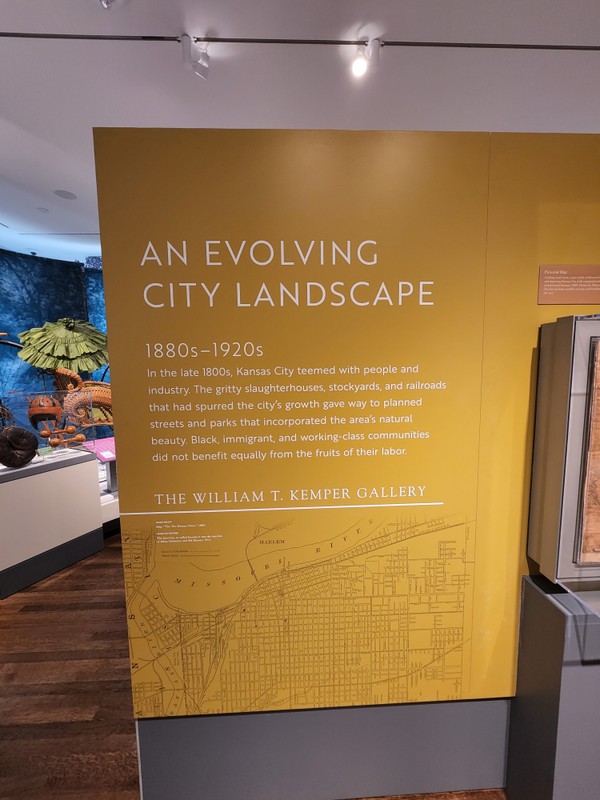
Photo of an early Kansas City by the river
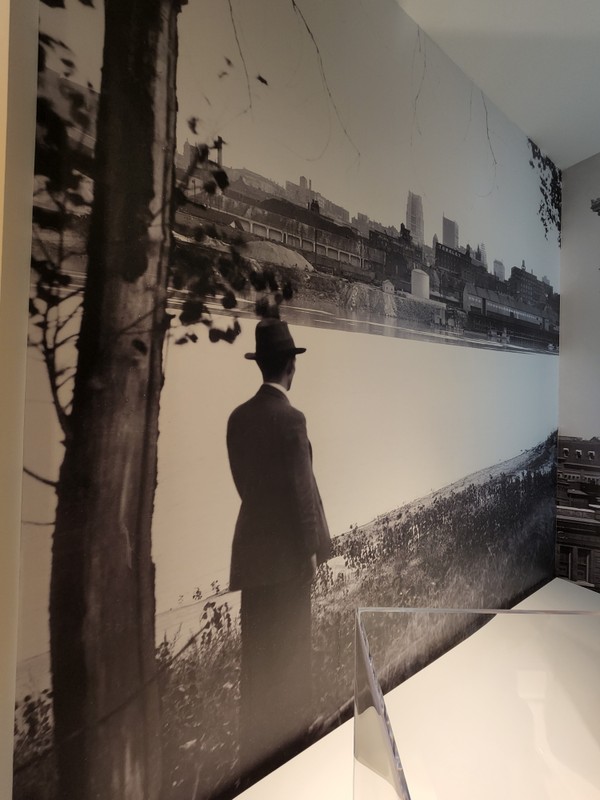
A City Takes Shape Label
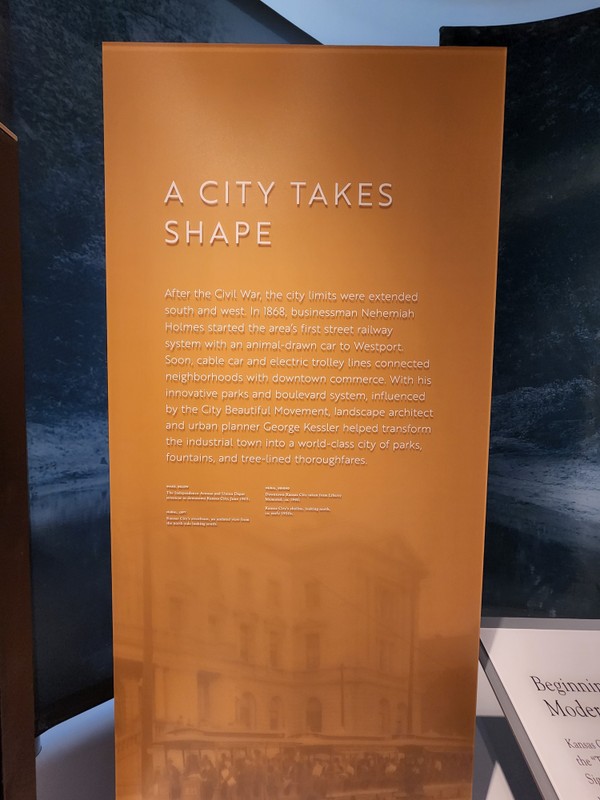
Photo of early Downtown Kansas City
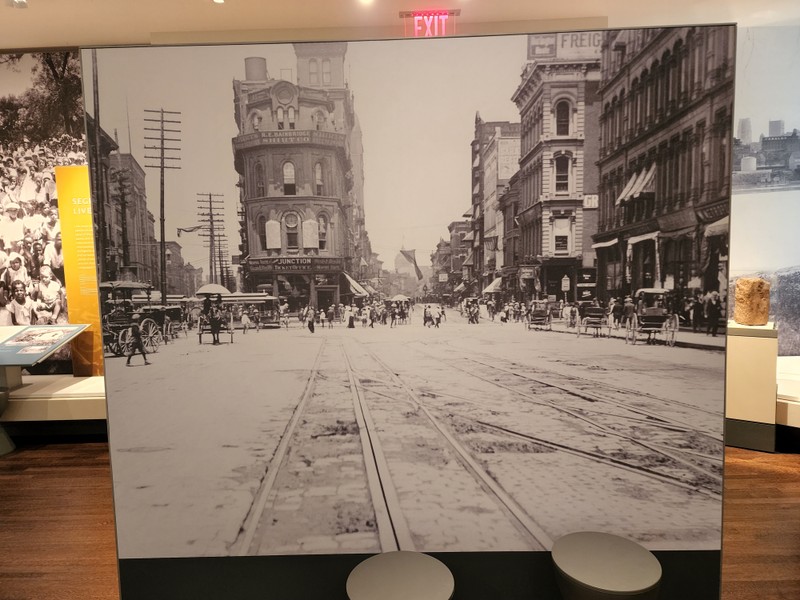
Communities & Culture Label
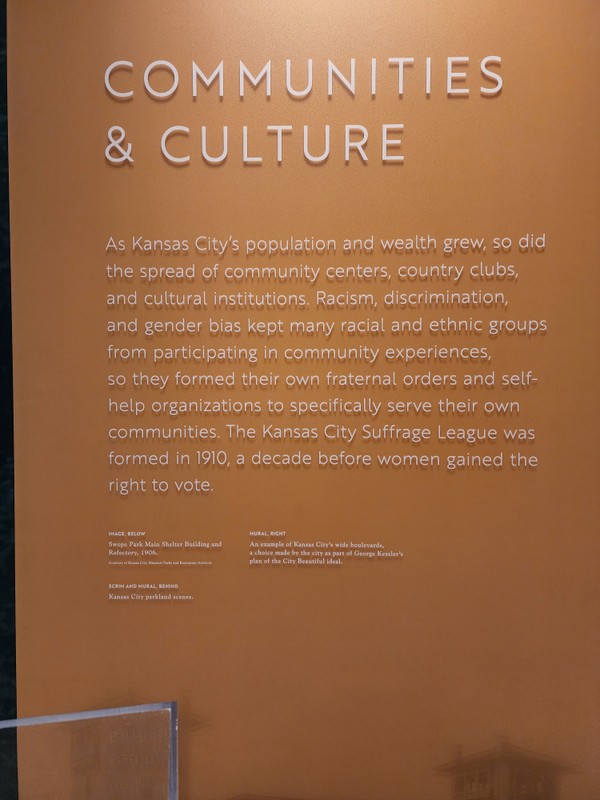
Priests of Pallas Display
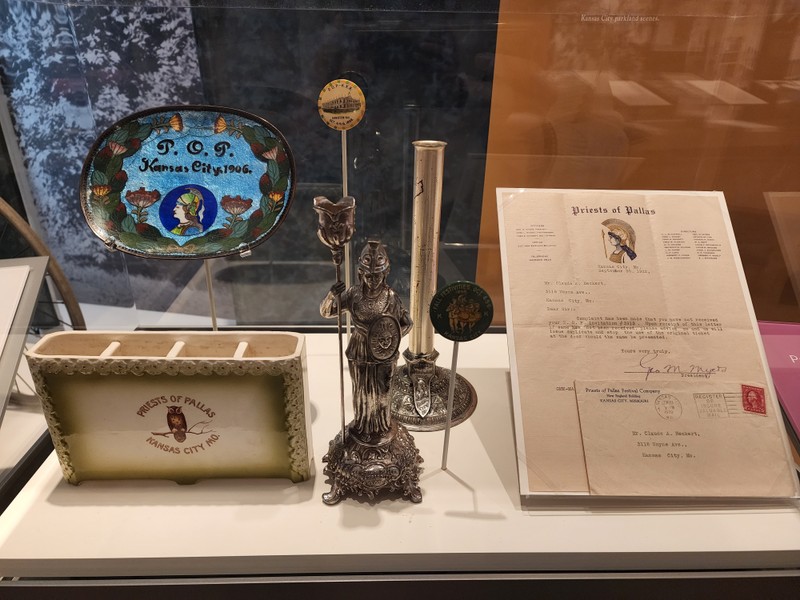
Common Interest, Common Causes Label

Segregated Lives Label
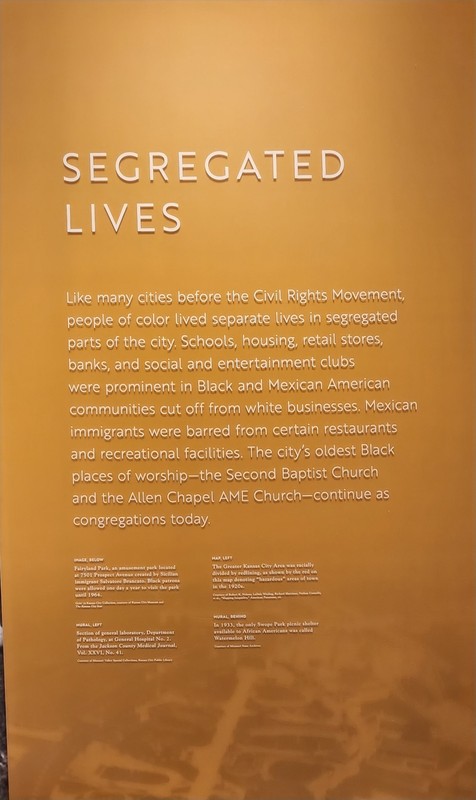
Quote from Ida Bowman Becks
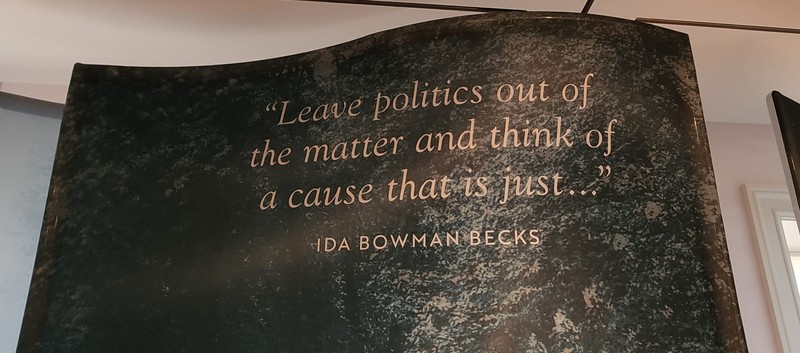
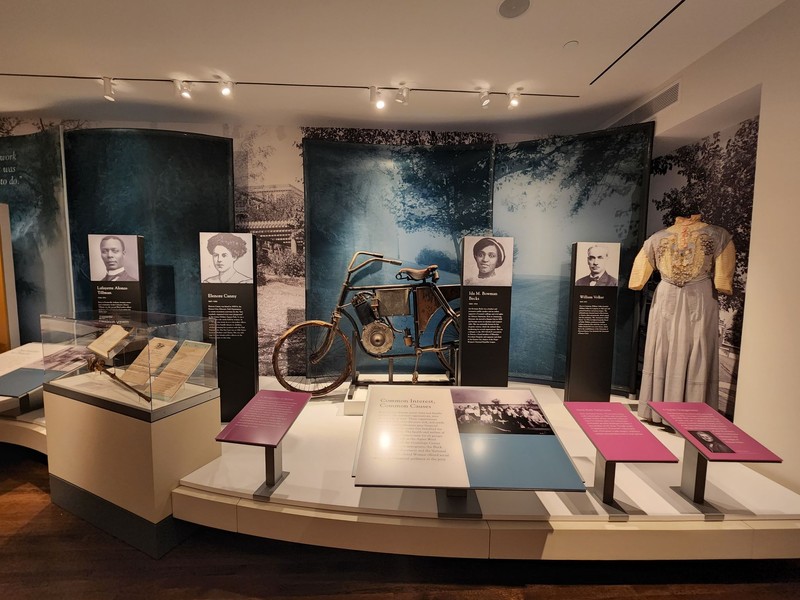
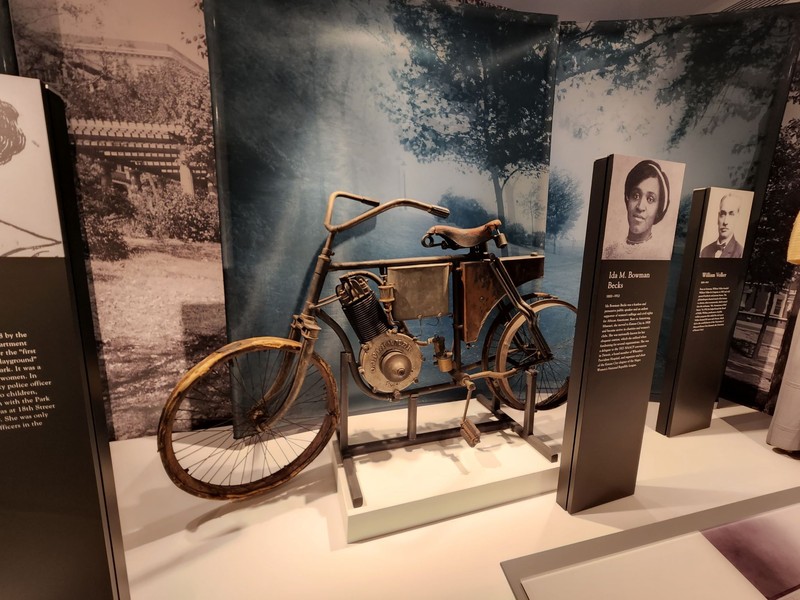
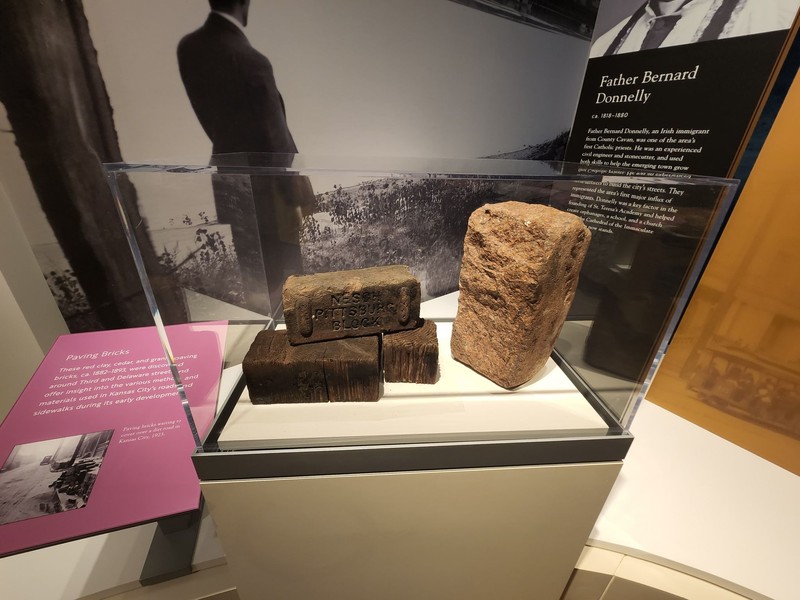
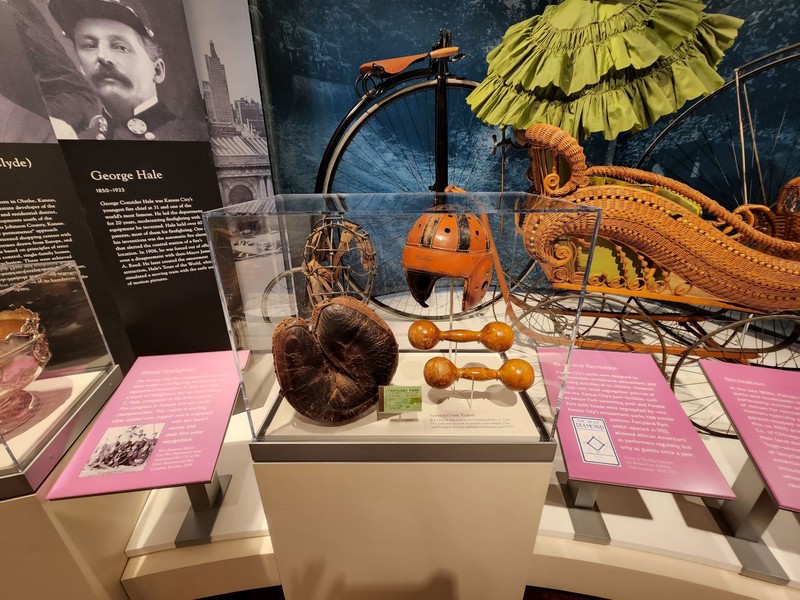
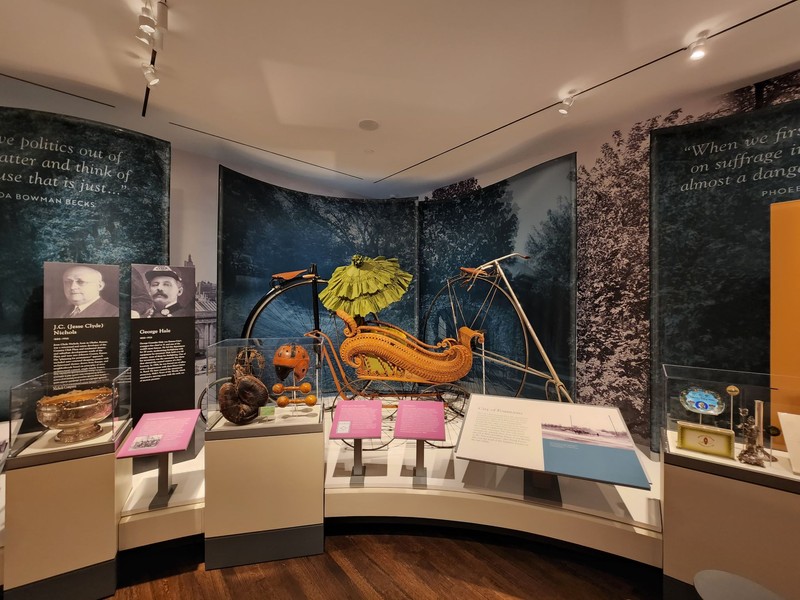
Backstory and Context
Text-to-speech Audio
The second half of the 1800s was a period of growth for Kansas City. City limits were extended in the south and the west, immigrants of varying backgrounds moved to the city, and industries began to flourish in the area. Originally incorporated as the "Town of Kansas" in 1850, and later changed to Kansas City in 1889, the city's growth truly erupted after the end of the Civil War with the development of the Hannibal Bridge. The evolution of transportation methods within the city also contributed to growth, and allowed Kansas Citians the opportunity to move more efficiently around the city. Starting with an animal-drawn streetcar railway introduced by Nehemiah Holmes in 1868, community transportation methods evolved into a cable car and electric trolley system. As transportation evolved, so too did the landscape within the City. Urban planner George Kessler, inspired by the City Beautiful Movement, created parks and other landscapes in the area that beautified the city. Kessler designed the park situated outside the library located in Corinthian Hall.
Kansas City's growth can also be attributed to many individuals, but it is also important to remember that some of leaders made decisions that limited the freedoms and opportunities of African Americans and other marginalized groups. One such individual was the real estate developer Jesse Clyde Nichols, usually known as J.C. Nichols. The Country Club Plaza and residential areas were designed by Nichols, but he is also known for the implementation and perpetuation of strict racial segregation in his neighborhood developments, enforced by racial codes in deeds and home owners' associations. Such implementations maintained racial segregation within Kansas City neighborhoods well into the 20th Century, demonstrating how the City's growth mostly benefitted certain white Kansas Citians while limiting opportunities for African Americans, immigrants, and the working class.
While the period following the Civil War saw limited victories for racial integration such as the Civil Rights Act of 1875, Supreme Court cases like Plessy v. Ferguson in 1896 upheld state and local laws mandating racial segregation in public facilities. Racial discrimination impacted employment opportunities, education, healthcare, home ownership, and many other aspects of life within Kansas City. African Americans, Mexican Americans, immigrants, Jews, and Native Americans all experienced discrimination throughout this period, which extended well into the latter half of the 20th century and left a lasting legacy of racial and ethnic discrimination that is still visible in Kansas City today.
Underrepresented communities, including Black and Mexican communities, created and supported their own schools, banks, housing developments, retail stores, and social and entertainment clubs. Churches were also prominent organizations in communities of color, with both the Second Baptist Church and the Allen Chapel AME Church, the oldest Black congregations in Kansas City, still serving the community today. The African American community in Kansas City also created twenty-two Black newspapers, including "The Call," which provided news coverage on the Black community, often ignored in white newspapers.
General Hospital No. 2 was created in 1908 after Dr. Thomas Unthank lobbied for its development. The hospital employed many top Black doctors and nurses and served people of color who had been segregated from white hospitals. The Wheatley-Provident Hospital also served the African American community in Kansas City, and employed an entirely Black staff. Founded by Dr. J. Edward Perry in 1902, the hospital evolved from a private practice to the Perry Sanitarium and Nurse Training Association by 1910, and finally to the Wheatley-Provident Hospital in 1918. The hospital grew again in 1925 through a collaboration with Dr. Katherine Berry Richardson, co-founder of the Children's Mercy Hospital, that resulted in the construction of a two-story pediatric ward.
Additional individuals contributed to the Black community of Kansas City, including Lafayette Alonzo Tillman and Ida M. Bowman Becks. Tillman served as the second Black police officer in Kansas City and operated a barbershop in the area. He became a police officer after returning from the military, where he had served in the Philippine Insurrection and the Spanish-American War and risen to first lieutenant. Becks was an avid advocate for women's suffrage and African American civil rights in Kansas City. She was nationally known for her eloquent public speaking, which she used as a delegate in the 1921 NAACP convention in Detroit, Michigan. She contributed to the community in many ways, including the organization of the Negro Women's National Republic League. People of color continuously fought for equal rights in Kansas City, and their efforts should always be remembered.
Government organizations in Kansas City also experienced growth during this time. The Kansas City Fire Department has offered innovation in fire prevention and fire fighting since its inception. Its youngest chief, George Hale, contributed to such innovation, modernizing techniques through his own inventions. The Kansas City Fire Department won the International Fire Congress competition held in Europe in both 1893 and 1900, demonstrating the department's skills. The Parks and Recreation Department also grew throughout this period and offered services to parts of the community. Community parks served as a form of popular recreation for Kansas Citians, however, segregation was enforced in many parks around the city, limiting activities available to people of color in the area. In 1908, the Park Department hired Elenore Canny to develop recreation activities at Holmes Square Park, a role not normally held by women. She was sworn in as a police officer in 1910, only one of three female police officers in the country at the time, specifically focusing on threats to children. Civilian-led organizations also developed throughout this period. Such organizations included the Kansas City Suffrage League, the Agnes Ward Amberg Club, the Black Women's Club Movement, the National Association of Colored Women, and the Guadalupe Center, among others.
Forms of community entertainment also experienced growth at this time. For example, the Priests of Pallas celebration was organized by the business community. From 1887 until 1912, this festival occurred each Fall, including a parade and an elaborate, invitation-only formal ball. Thrown in the honor of the Greek goddess, Pallas Athene, the festival served as a way to promote shopping downtown. Although formally ending in 1912, the festival returned from 1922 to 1924. While Kansas City experienced extensive growth from the 1880s through the 1920s, there was also an unequal distribution of wage benefits, and racial discrimination plagued the city. In order for Kansas City to truly thrive, decades of changes would need to occur, and even with such change, the foundations of inequality can still be seen throughout the city today.
Sources
Kansas City Museum, 3218 Gladstone Blvd., Kansas City, MO, 64123 (accessed March 8, 2022). Wall Plaques: Wall text. William T. Kemper Gallery, Kansas City Museum, Kansas City, Missouri.
